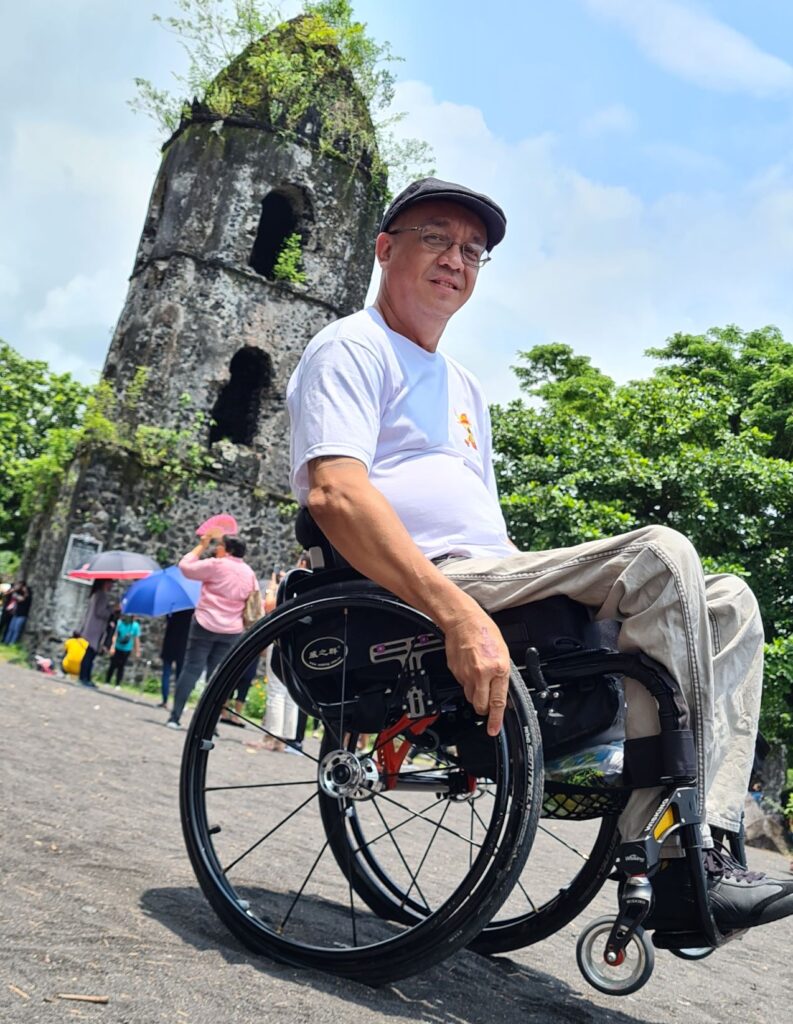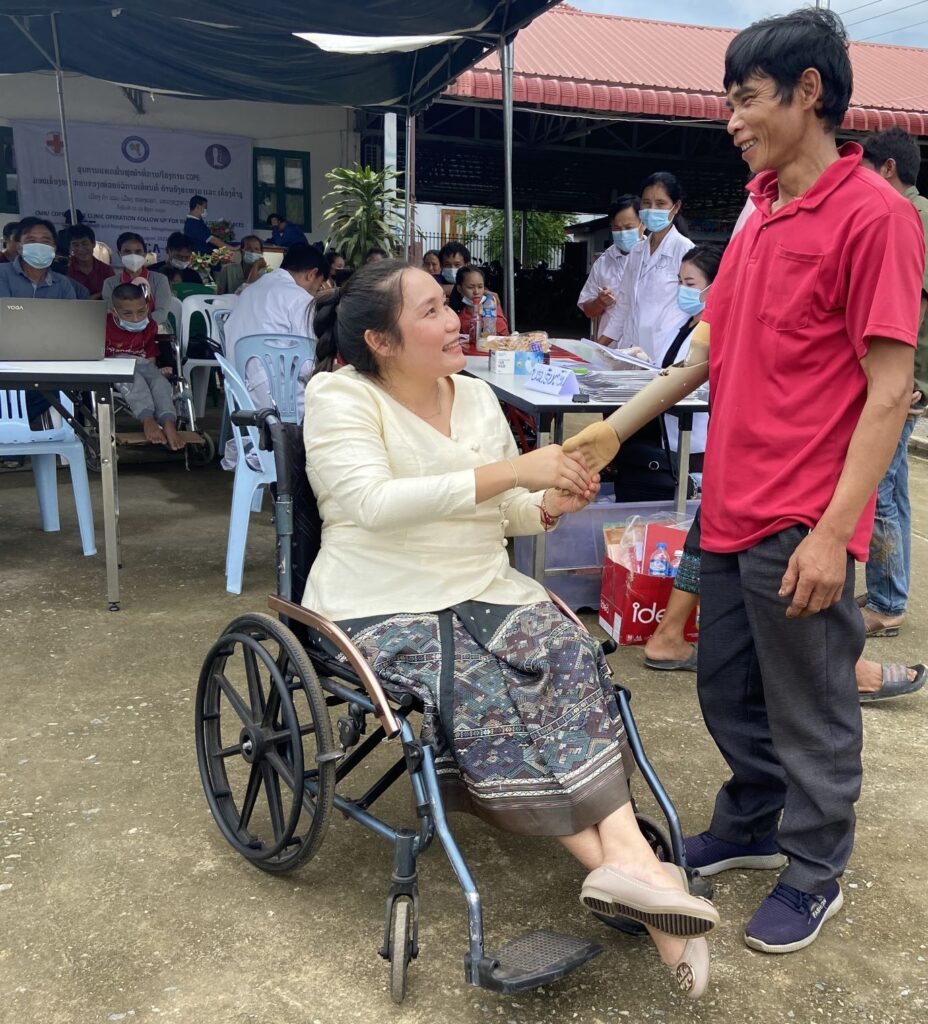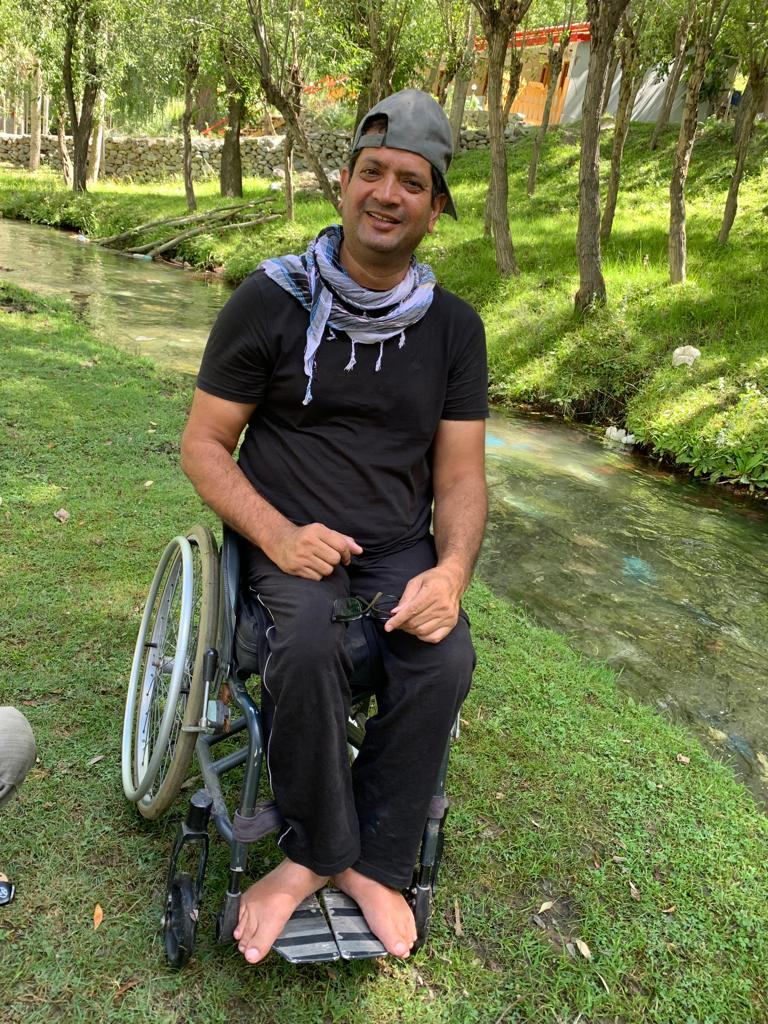By Neena Bhandari
Sydney, 31.08.2022 (SciDev.Net): Limited access to assistive technologies such as eyeglasses, hearing aids, mobility and communication devices, affordability and a lack of trained workforce remain significant challenges in meeting the needs of people with disabilities and the elderly in the Asia Pacific region.
According to a 2022 UN report, access to assistive technologies in some low-and middle-income countries is as low as three per cent. Assistive technology is an umbrella term for devices and related services that help users live with greater independence by improving their functioning in daily activities.
Globally, the market for assistive technologies for the disabled and elderly is expected to reach US$60.84 billion by 2028, says a recent study. It is expected to rise fastest in the Asia Pacific region because of the large population base and rising awareness about better healthcare.
“The demand for rehabilitation services and assistive technologies is growing for a whole range of reasons,” says Wesley Pryor, principal advisor at the University of Melbourne’s Nossal Institute for Global Health, in Australia. “It includes the changing profile of diseases away from communicable to non-communicable diseases; and due to the diminishing likelihood that, as people age, their children and grandchildren will be available to take care of them.”
Availability and affordability are major barriers to access. “Governments in developing countries face this dilemma of providing more people with poor quality devices versus few people with high-quality devices,” says Abner Manlapaz, president of the Life Haven Center for Independent Living and senior associate at the Center for Inclusive Policy, in Valenzuela City, Philippines.

Manlapaz says that if a person does not get the right support, it becomes a waste of resources. Good quality devices last longer. A cheap wheelchair, for example, will only last six months to a year whereas a good quality wheelchair can last up to ten years, he says.
Imported assistive products are often not suitable for the user. “The Pacific Island countries are often being used as dumping grounds for secondhand or unwanted products by developed countries,” says Setareki Macanawai, Pacific Disability Forum’s chief executive officer. “Providers need to talk to persons with disabilities and their representative organisations in island countries and factor in user needs, affordability and the infrastructure — for example, unsealed roads”.
A 2018 report by ATscale, the Global Partnership for Assistive Technology, showed the unequivocal benefits in health, social inclusion and economic returns of investing in assistive technology.
Governments and civil societies in the region are adopting measures, such as producing devices locally, to expand access to assistive technologies.

“The government [in Lao People’s Democratic Republic] is encouraging devices, such as axillary and elbow crutches, standing frames and cerebral palsy walkers, to be made locally so they are more affordable and sustainable,” says Metta Thippawong, Cooperative Orthotic Prosthetic Enterprise Programme Manager for Lao. She is herself a wheelchair user owing to lower limbs paralysis from polio.
Nearby Cambodia has three local wheelchair producers making standard wheelchairs, and a local orthopaedic component factory, started by the International Committee of the Red Cross two decades ago and now run by the Persons with Disabilities Foundation, a government institute.
“All the devices are custom made by trained and internationally qualified technicians from the National Institute of Social Affairs’ Department of Prosthetics and Orthotics, which is also providing training to students from 26 Asia Pacific and African countries,” says Sisary Kheng, department director and Cambodia country director of Exceed Worldwide.

“Cambodians now have access to free as well as top of the range titanium prosthesis for which components are sourced from world-class companies. Because of cheaper labour, it costs approximately US$250 for a transtibial prosthesis (below the knee artificial limb) or US$350 for a transfemoral prosthesis (an artificial limb that replaces any amputated limb above the knee),” says Kheng.
In Thailand, about 2.1 million people (3.17 per cent of the total population) registered with a disability are entitled to 76 assistive technology products listed in the Universal Coverage Scheme for healthcare launched in 2002, says Sawang Srisom, a member of the sub-committee of disability affairs at the Senate of Thailand.

“The items can either be borrowed or bought, but most people can keep the items for use as long as they wish,” Srisom tells SciDev.Net, referring to access to assisted technologies in Thailand. “There is a huge demand for wheelchairs and prosthetics, but the supply is not enough, so there can be long waiting periods. In some rural and remote areas, a person may never get one.”
Growing up with polio in rural north-eastern Thailand, Srisom recalls getting a tricycle used by people with disabilities only when he transitioned to secondary school. But at school, his classroom was on the second floor so he had to crawl upstairs. It became so difficult and humiliating that he had to quit regular school, he says.
Shafiq ur Rehman had a similar experience growing up in Pakistan, which motivated him to co-found Milestone (Society for Special Persons) with his other friends with a disability. “In the late 1970s, there was no concept of mobility devices in Pakistan. Doctors pushed my family to ‘repair’ my legs paralysed by polio. I was forced to walk with the aid of braces and crutches. It was so painful that I would just crawl.”
Rehman received his first wheelchair at the age of 24 while on a scholarship to Japan for a disability leadership training programme. “The light-weight manual wheelchair was the turning point in my life,” he says.
Only five per cent of individuals in need in low-and-middle-income countries have a wheelchair compared to 90 per cent of those in high-income countries, according to the ATscale report.

“We began with importing used manual wheelchairs from Japan and customising them to be fit-for-purpose for the local user; and then electric wheelchairs with support from the Japan Council on Independent Living Centers,” Rehman tells SciDev.Net. “Currently, we are manufacturing 5,000 wheelchairs a month that cost US$100. We are also making medical beds, walkers and canes. The majority of people working in our manufacturing units are people with a disability.”
The ATscale report highlighted that the supply of the four most needed products — wheelchairs, prostheses, hearing aids and eyeglasses — is not keeping up with the increasing demand. “Stimulating supply through subsidies by shaping markets and reducing the cost of assistive products to individuals are promising strategies,” says Pryor.
“The challenge is to optimise access to products that are already available and eliminating inequities in distribution due to structural, geographical and financial barriers, and exploitative market practices,” Pryor adds.
Attention is now shifting from mobility devices to a whole gamut of technologies that can support people to live independently. But in developing countries, many people with a disability do not have access to the internet or a smartphone. This places additional challenges on people with visual and hearing impairment as they have difficulties in using app-based accessibility tools, say disability advocates.
Countries in the region are striving to include assistive technology as part of universal healthcare. Says Pryor, “In health policy, assistive technology falls under the domain of procurement rather than a mainstream agenda item. For many countries, there’s often a single procurement approach for medicines and medical products. They’ll audit and tender for a national supply of saline drips, for example, but rarely for basic assistive products.”
In many countries, disability and assistive devices may fall under the remit of different ministries and that may create confusion for the user. Thailand, for example, has three ministries that provide assistive devices to people with disabilities — Public Health (mobility devices), Digital Economy and Society (tablets and mobile phones), and Education (Braille slates).
Lack of trained workforce
The other major barrier in access to assistive technology is workforce shortages — over 75 per cent of low-income countries have no prosthetic and orthotics training programmes.
“In the Philippines, access to the disability benefits programme is very limited because of gaps, such as in trained assistive technology workforce. This is being addressed by offering a government-funded free technical skills training programme in colleges,” says Manlapaz, who has been advocating for disability rights, inclusion and access to assistive devices.
“The occupational therapist training, for example, has been geared towards strengthening, correcting and maximising physical functioning as against supporting with assistive products,” says Manlapaz, who acquired Guillain-Barré Syndrome at the age of 16. He recalls being pushed to use a brace rather than a wheelchair, despite severe weakness of the lower extremities, which badly impacted his spine and shoulders.
One of the recommendations of the UN Report on Assistive Technology is to enlarge, diversify and improve workforce capacity.
“In developing countries of the Asia Pacific, it is incredibly challenging to ensure [assistive technology] users have access to both products and the professional services to fit the product. These services ’wrap around’ the product. They include evaluation, product trials, user training and customisation — essential to ensure the products fit users and their environments,” says Natasha Layton, occupational therapist, policy adviser and senior research fellow at Monash University in Melbourne.
Workforce training for assistive products is fragmented and differs from country to country. “There is rarely an ‘assistive technologist’ as such,” says Pryor. “To deliver access across the whole spectrum of functional issues — memory loss, vision and hearing impairment, to mobility and incontinence, it’s not a single workforce or market. And that’s a really complex system challenge, which needs a whole mix of interventions.
Countries need to accelerate access to affordable and appropriate assistive technology to meet their 2030 Sustainable Development Goals. There are legally binding instruments like the UN Convention on the Rights of Persons with Disabilities, and, at the regional level, the Pacific Framework for the Rights of Persons with Disabilities.
“There are opportunities, now the governments need to walk the talk,” Macanawai tells SciDev.Net.
Continue Reading on SciDev.Net
© Copyright Neena Bhandari. All rights reserved. Republication, copying or using information from neenabhandari.com content is expressly prohibited without the permission of the writer and the media outlet syndicating or publishing the article.


